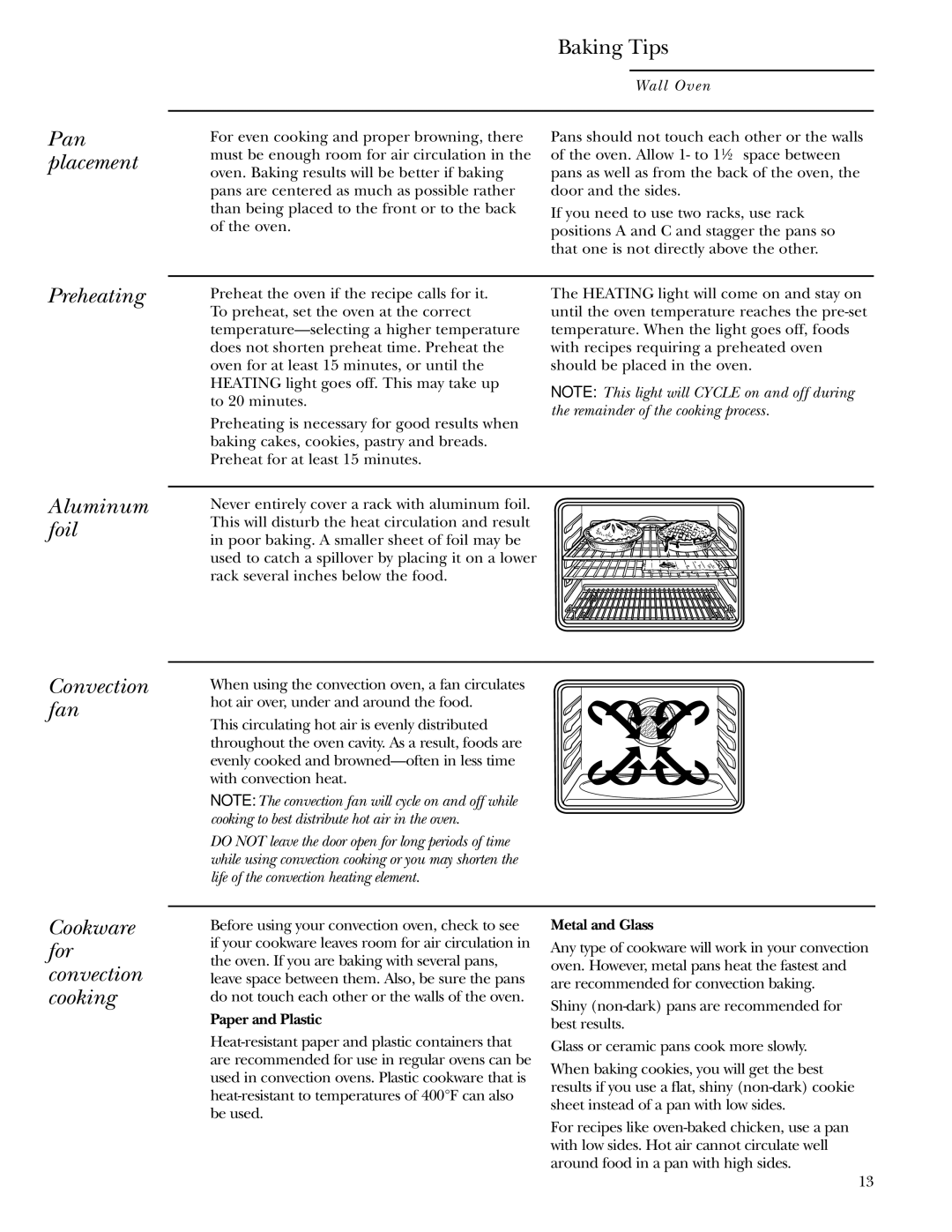
Baking Tips
Wall Oven
Pan placement
For even cooking and proper browning, there must be enough room for air circulation in the oven. Baking results will be better if baking pans are centered as much as possible rather than being placed to the front or to the back of the oven.
Pans should not touch each other or the walls of the oven. Allow 1- to 11⁄2″ space between pans as well as from the back of the oven, the door and the sides.
If you need to use two racks, use rack positions A and C and stagger the pans so that one is not directly above the other.
Preheating
Preheat the oven if the recipe calls for it. To preheat, set the oven at the correct
Preheating is necessary for good results when baking cakes, cookies, pastry and breads. Preheat for at least 15 minutes.
The HEATING light will come on and stay on until the oven temperature reaches the
NOTE: This light will CYCLE on and off during the remainder of the cooking process.
Aluminum foil
Convection fan
Never entirely cover a rack with aluminum foil. This will disturb the heat circulation and result in poor baking. A smaller sheet of foil may be used to catch a spillover by placing it on a lower rack several inches below the food.
When using the convection oven, a fan circulates hot air over, under and around the food.
This circulating hot air is evenly distributed throughout the oven cavity. As a result, foods are evenly cooked and
NOTE: The convection fan will cycle on and off while cooking to best distribute hot air in the oven.
DO NOT leave the door open for long periods of time while using convection cooking or you may shorten the life of the convection heating element.
Cookware for convection cooking
Before using your convection oven, check to see if your cookware leaves room for air circulation in the oven. If you are baking with several pans, leave space between them. Also, be sure the pans do not touch each other or the walls of the oven.
Paper and Plastic
Metal and Glass
Any type of cookware will work in your convection oven. However, metal pans heat the fastest and are recommended for convection baking.
Shiny
Glass or ceramic pans cook more slowly.
When baking cookies, you will get the best results if you use a flat, shiny
For recipes like
13
